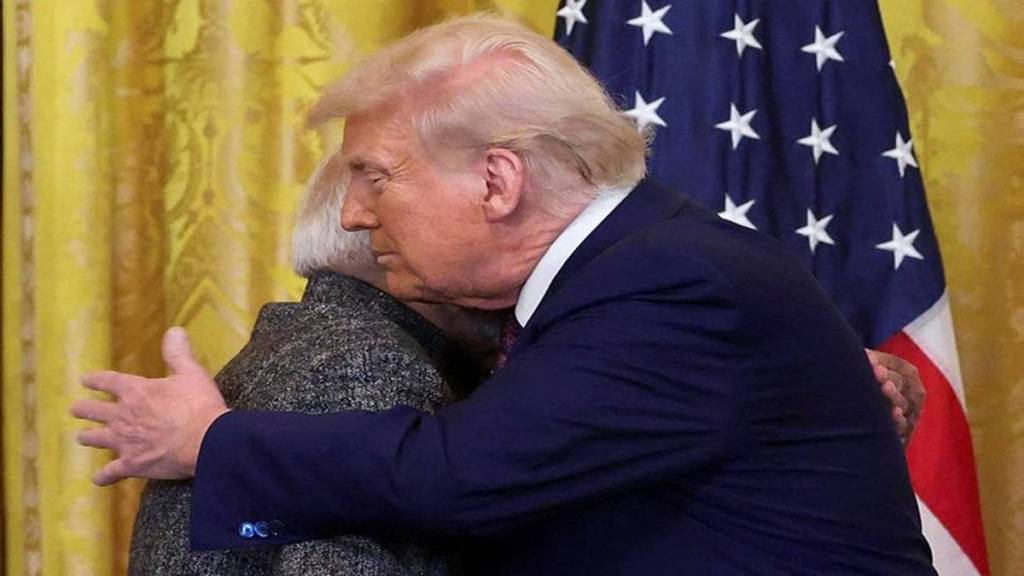The bilateral discussions between Indian Prime Minister Narendra Modi and US President Donald Trump in Washington D.C marks a new chapter in military relations between the two nations. With a focus on enhancing defence collaboration, this meeting set the stage for strategic initiatives aimed at expanding military technology exchanges, co-production ventures, and strengthening bilateral defence ties.
Here is a breakdown of the major outcomes that will shape the future of US-India defence cooperation.
A major highlight from the discussions was the announcement of the US-India COMPACT (Catalyzing Opportunities for Military Partnership, Accelerated Commerce & Technology for the 21st Century). This initiative aims to drive innovation and collaboration across several key sectors, with defence being one of the most prominent. According to the Outcomes document issued by the Ministry of External Affairs (MEA) as part of this, the two countries will formalize a ten-year defence framework, expected to be signed later this year. This agreement will lay the foundation for deepening military partnerships, with a clear focus on technology, trade, and defence industrial cooperation.
The two sides also discussed firming the military capabilities of India through US defence sales and co-production.
This includes the procurement of advanced defence systems, such as the Javelin missiles and Stryker vehicles, to enhance India’s defence forces. Additionally, India is set to receive six more P-8I Poseidon aircraft for the Indian Navy, which will significantly boost the country’s maritime reconnaissance and anti-submarine warfare capabilities. FinancialExpress.com had recently reported that the two leaders will discuss the possibility of additional P8I aircraft as well Stryker vehicles.
The International Traffic in Arms Regulations (ITAR), which often complicates the exchange of defence technologies was discussed. A review of these regulations aims to ease the process of defence technology transfers between the US and India, allowing for smoother trade, spare part supplies, and local maintenance of US-supplied defence systems.
In an effort to further simplify defence exchanges, India and the US are set to start talks this year on a Reciprocal Defence Procurement (RDP) agreement. Once this agreement is in place it will ensure that both countries can easily purchase defence goods and services from one another, promoting efficiency in procurement processes.
One of the most exciting developments is the commitment to accelerate collaboration on defence technologies. This includes areas such as space, missile defence, air defence, maritime defence, and undersea capabilities.
The US has also committed to reviewing its policy on supplying fifth-generation fighters, including the F-35 Lightning II, to India. The F-35 is one of the most advanced stealth fighters in the world, and if the policy review results in a sale, it would significantly enhance India’s air defence capabilities and strengthen its strategic position in the region.
The Autonomous Systems Industry Alliance (ASIA)
The biggest takeaway from the meeting todayis the Autonomous Systems Industry Alliance (ASIA). This new partnership will focus on underwater domain awareness technologies, where India will become the first country to collaborate with the US defence industry on such sensitive systems.
The US companies are heavily involved in this venture:
Thayer Mahan, working on the Sea Picket autonomous surveillance system with sonar technology.
FinancialExpress.com in 2024 during Prime Minister Modi’s State visit to the US had reported about the collaboration between Liquid Robotics, a US-based company (now part of Boeing) and India’s Sagar Defence Engineering. This partnership focuses on the co-development and co-production of unmanned surface vehicle systems designed to bolster undersea and maritime domain awareness. They will together production of Wave Glider unmanned surface vehicles in India.
L3 Harris, in talks with Bharat Electronics to co-develop Low Frequency Active Towed Sonar systems.
Ultra-Maritime, collaborating with Bharat Dynamics Ltd. for the co-production of Multi-Static Active Sonobuoys.
Anduril, involved in developing Large Diameter Autonomous Undersea Vehicles.
Ocean Aero, partnering with India to produce the Triton autonomous underwater and surface vehicle.
These collaborations mark a significant leap in technological cooperation, allowing both nations to enhance their maritime defence capabilities, particularly in the area of autonomous underwater systems.
Strengthening Security and Intelligence Sharing
The summit also emphasized the need to enhance logistics and intelligence sharing between the U.S. and India. These efforts are critical for improving coordination, ensuring quick responses to security threats, and sharing crucial defence intelligence across the Indo-Pacific region.

